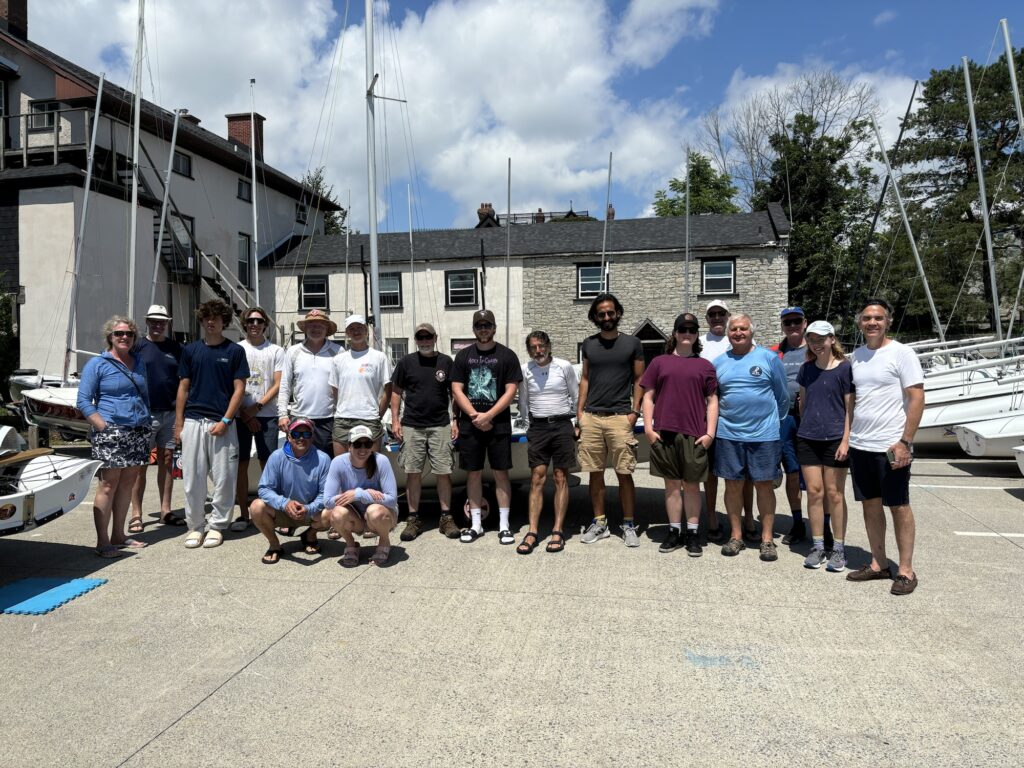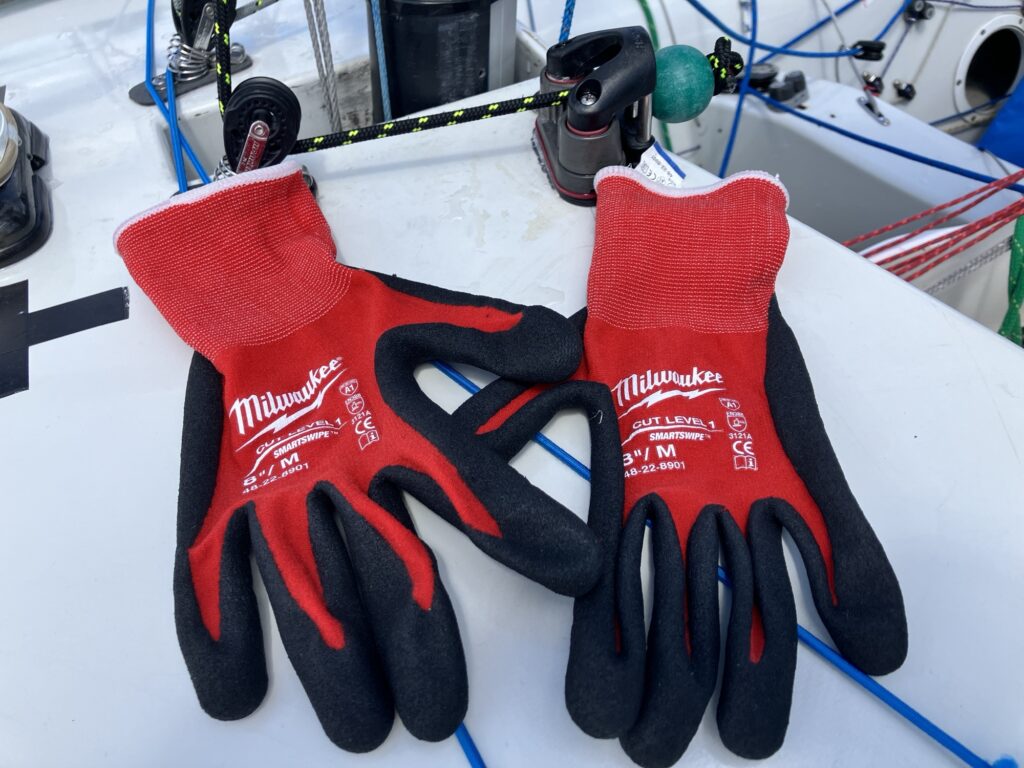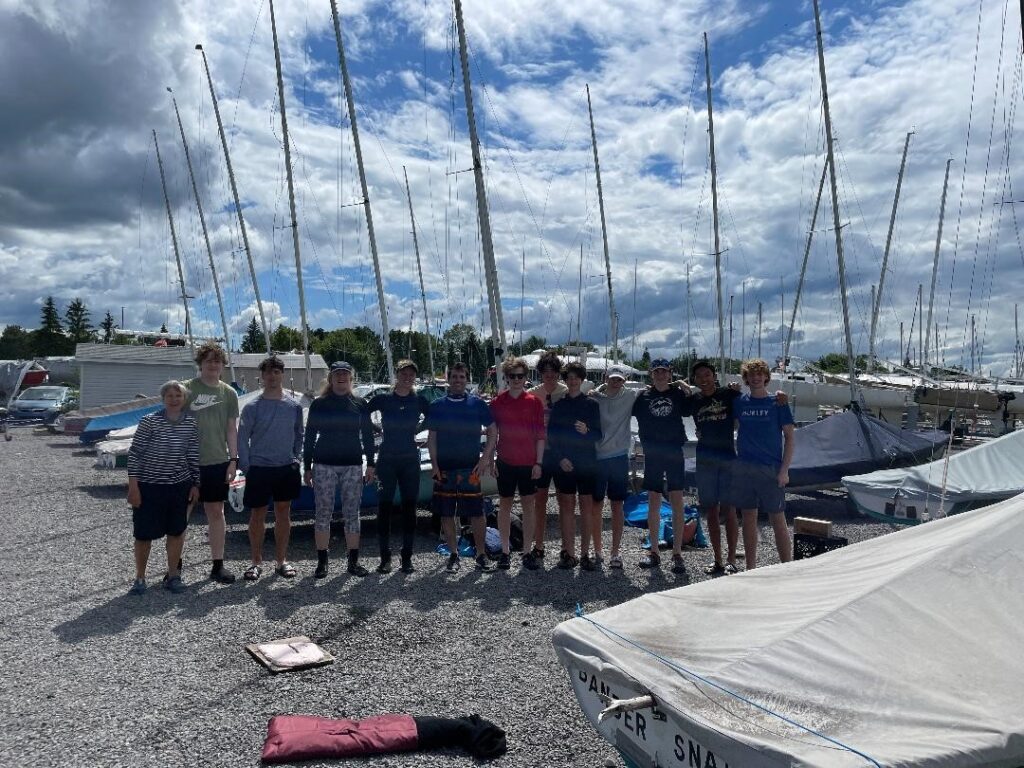On July 13-14 eleven 505s convened in Newport, Rhode Island for the 40thAnniversary Newport Regatta that also served as the New England Championship. Teams travelled from Ottawa, Toronto, Western New York and Florida to compete with a host of other classes including everything from 12 Meters to F-18 cats. You know that when 12 Meters are involved, the quality and quantity of food is certainly improved! Mount Gay Run was the primary sponsor, and so the Saturday party didn’t disappoint.
Weather for the weekend was not so stellar as we might have hoped with rain and thick fog keeping sailors shore side until noon on Saturday. Eventually we got off two tricky races in SW breeze 5 to 12 knots after which the sun came out. Peter Scannell and John Dunilea (aka “Irish”) sailed quite well to win the day with 4 points. Following closely behind the Irish were Ethan Bixby/ Ted Huebner and Craig Thompson/Adam Wolnikowski both with 5, and Macy Nelson/Chris Brady with 6.
Sunday looked to be set up for a classic thermal from the SW, but it took a little bit of time to push the morning northwest flow out of the way. Racing got started a little late and three races were completed in 5 to 12 knots. With line starts for the weekend, and a long line set for a large fleet of VX1, you had to gauge the distance to the line carefully. Duane Delfosse/Mike Hull sailed consistently and won the day with 6 points followed by Craig/Adam and Luke Strictland/Christian Voyer each with 9. With 5 races completed and no throw outs, Craig and Adam’s consistency won out with 14 points. They retained possession of the Kivney Bowl for yet another year, much to Craig’s wife’s disappointment. Second were Ethan/Chris with 15 followed by Delfosse/Hull and Peter/John tied with 17. It should be noted that 5 different boats won the 5 races.
An underlying and extremely positive story for the weekend was how Luke Strictland and Christian Voyer upped their game throughout the event. Before and after sailing each day, Christian and Luke were asking a ton of great questions, and through that effort they were able to figure out their issues. Their series line of 7, 5, 5, 3,1 was not an accident, but specific and targeted improvement! I think the final piece of their puzzle was the discovery that a couple of screws had backed out of the centerboard (beak to CB connection) causing the board not to gybe. The whole fleet pulled together to help the young team. Hats off the university students from Ottawa as they made a mark in Newport!!
A second happy story was the arrival of Will and Bill Platt with their vintage Lindsay. Last year they hit a rock and tore off the transom. This year they were all repaired and got around the course fine with big smiles!
We’ll post some pictures if we can find some.






